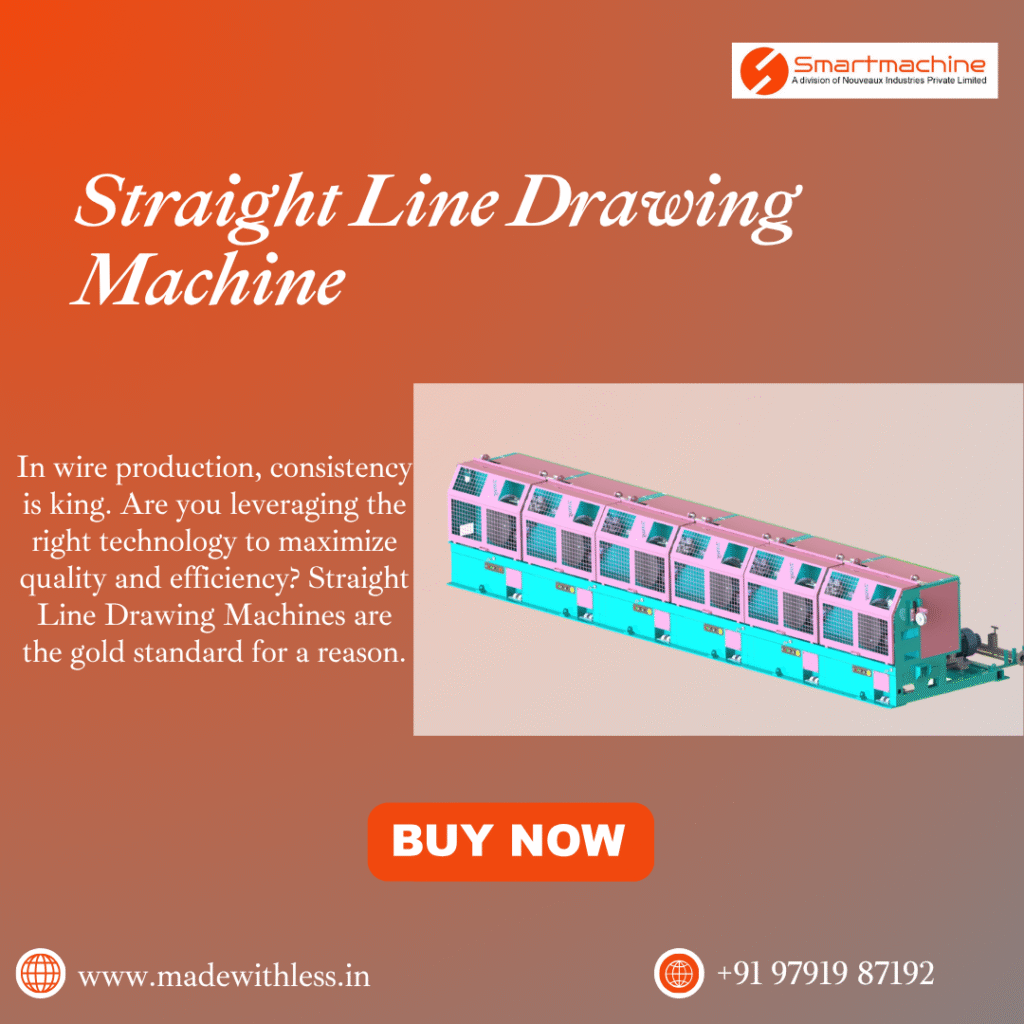In the world of wire manufacturing, precision, efficiency, and quality are non-negotiable. While there are various methods for reducing the diameter of wire, the straight line drawing machine stands as a cornerstone of modern production for a wide range of applications. From the copper in your electronics to the steel strands in your car’s tires, this technology is often the unsung hero behind consistent, high-quality wire.
If you’re looking to optimize your production line, understanding the advantages of this workhorse machine is crucial. Here are the top benefits of using straight line drawing machines in wire production.
1. Superior Surface Finish and Quality
One of the most significant advantages of the straight line drawing process is the exceptional surface finish it produces. The wire is drawn in a single, continuous straight pull through a series of dies. This linear motion, combined with modern cooling and lubrication systems, minimizes scratching and produces a wire with a very smooth, clean, and bright surface.
Why it matters: A superior finish is critical for applications like electroplating, enameling for motor windings, and fine electronic wires where surface defects can lead to product failure.

2. High Production Speeds and Efficiency
Straight line machines are designed for speed. By drawing the wire through multiple dies in a single pass, they achieve significant diameter reduction rapidly. Their robust design allows for continuous high-speed operation, translating directly into higher throughput and productivity for your facility.
Why it matters: In a competitive market, the ability to produce more high-quality wire in less time is a direct driver of profitability and market responsiveness.
3. Unmatched Dimensional Accuracy and Consistency
Precision is the name of the game. Straight line drawing machines provide excellent control over the final wire diameter and tolerances. The rigid, stable design ensures that the wire path is consistent, vibration is minimized, and the reduction at each die is precisely controlled. This results in a final product with uniform diameter from start to finish of a coil.
Why it matters: Consistent gauge is essential for automated assembly processes, electrical conductivity specifications, and mechanical strength requirements. It reduces waste and ensures your customers get exactly what they ordered, every time.
4. Handling a Wide Range of Materials and Sizes
The versatility of straight line drawing machines is remarkable. They are effectively used to draw a vast array of both ferrous and non-ferrous metals, including:
- Copper and Aluminum for electrical conductors
- Stainless Steel for springs, medical devices, and fasteners
- Carbon Steel for tire bead, ACSR core, and other high-strength applications
- Alloy Wires for specialized industrial uses
They can process wire from intermediate gauges down to very fine diameters, making them a flexible solution for many production needs.
5. Operational Simplicity and Ease of Maintenance
Compared to more complex systems like bullblocks or cone-type machines, the straight line configuration is relatively straightforward. The path of the wire is simple to thread and monitor. This simplicity translates into easier operation, quicker operator training, and more straightforward maintenance routines.
Why it matters: Reduced downtime for maintenance and fewer operational errors keep your production line running smoothly and lower the total cost of ownership.
6. Efficient In-Line Process Integration
A key feature of modern straight line drawing machines is their ability to act as a platform for integrated processing. Ancillary equipment can be easily incorporated directly into the line, such as:
- Annealing Units: For in-line stress-relief annealing to soften the wire.
- Pre-coaters and Electroplating Systems: To apply a coating or plating before the final draw.
- Spoolers or Coilers: For automatic, tension-controlled winding of the finished product.
Why it matters: This “all-in-one” capability eliminates intermediate handling, reduces labor costs, and improves overall process control and product quality.
7. Improved Mechanical Properties
The drawing process itself work-hardens the wire, increasing its tensile strength and hardness. The controlled reduction in a straight line machine ensures this strengthening is uniform throughout the wire’s length, enhancing its mechanical properties for demanding applications.
Is a Straight Line Drawing Machine Right for Your Operation?
Straight line drawing machines are the undisputed champion for high-volume production of fine to medium-gauge wire where superior surface quality and dimensional consistency are paramount. They are particularly dominant in the electrical, electronics, and automotive industries.
While they may not be suitable for the very heaviest gauge rods (where a bullblock is more appropriate), their speed, precision, and reliability make them an invaluable asset for a vast portion of the wire manufacturing market.
